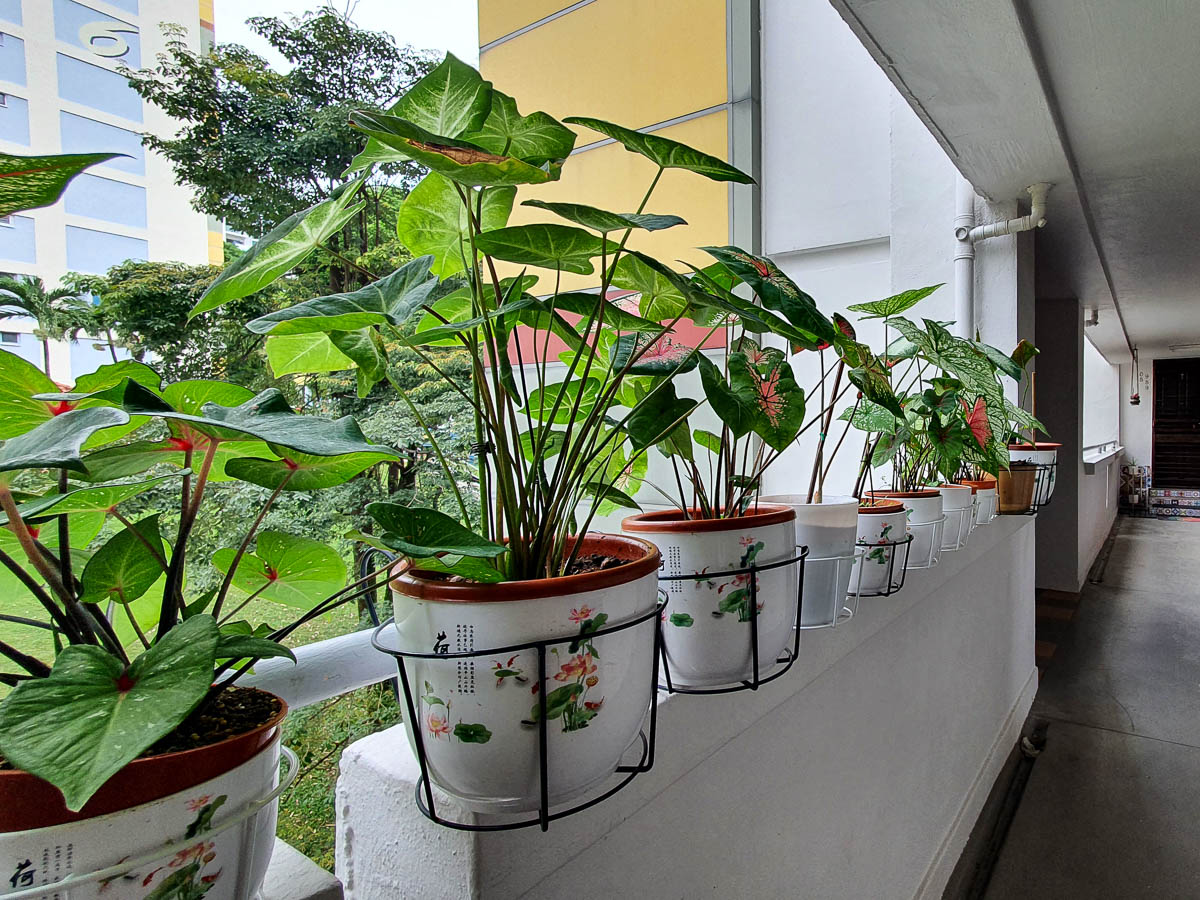Good Corridor Gardening Practices
.jpg)
Common corridors are shared spaces that neighbours can enjoy together. Growing plants in this communal space can be challenging, especially since the corridors need to also be used by the Singapore Civil Defence Force, Town Councils and others.
Download our Good Corridor Gardening Practices brochure for reference!
Minimum access clearance
.jpg)
All corridors need a minimum of 1.2m clearance for the Singapore Civil Defence Force to access homes in the case of emergencies. Keep your plant pots and other materials flush against the walls and parapets to keep the corridor accessible.
Keeping your corridor safe
.jpg)
Plant pots should always be secured on the inner parapet walls with racks and planters that are stable, even in high wind conditions. Racks with adjustable grips are the most versatile for large parapets, while iron-wrought plant stands are heavy and stable enough to remain upright while holding potted plants.
If you are using catchment plates to hold water, make sure that you remove the water at least once a week to prevent mosquitoes from breeding. Pots with water reservoirs should similarly have their water changed regularly or have BTI granules applied to kill mosquito larvae.
Keeping your corridor garden neat is also a good way to keep it safe. Trimming back overgrown plants, checking pots and racks for damage, and removing debris are some easy ways to make gardening safe and straightforward.
Choosing plants for your corridor
As with any other garden, it is best to figure out how much space you can work with, and how much light you receive throughout the year before you choose your plants. In this case, small plants that thrive in containers that can also tolerate shade would be the best choice for most corridors. Do take note that your pot placement will also affect how much light and space your plant will get. For the most amount of light, try to place your racks or pot stands flush against the parapet.
Because corridors also have a lot of traffic, it is also important to choose plants that are not thorny, sharp, or otherwise dangerous to keep you and your neighbours safe.
.jpg)
Here are some edible plants to grow along your corridor:
-
- Bayam (Amaranthus tricolor)
- Kang kong (Ipomoea aquatica)
- Lettuce (Lactuca sativa)
- Cai Xin (Brassica rapa Caisin Group)
- Kai Lan (Brassica oleracea Alboglabra Group)
- Xiao Bai Cai (Brassica rapa Pak Choi Group)
- Chinese Mustard (Brassica juncea Broad-leaf Mustard)
- Chilli (Capsicum annuum)
- Chives (Allium tuberosum)
- Thai Basil (Ocimum basilicum)
-
- Spearmint (Mentha spicata)
- Indian Borage (Coleus amboinicus)
- Sawtooth Coriander (Eryngium foetidum)
- Turmeric (Curcuma longa)
- Fingerroot (Boesenbergia rotunda)
- Sissoo Spinach (Alternanthera sissoo)
- Wild Pepper (Piper sarmentosum)
- Sand Ginger (Kaempferia galanga)
- Okinawan Spinach (Gynura bicolor)
- Longevity Spinach (Gynura procumbens)

Here are some ornamental plants to grow along your corridor:
-
- Burro's Tail (Sedum morganianum)
- Elephant Bush (Portulacaria afra)
- Fairy Washboard (Haworthiopsis limifolia)
- Mistletoe Fig (Ficus deltoidea)
- Mexican Hen and Chicks (Echeveria spp. and cultivars)
- Mexican Sedum (Sedum mexicanum)
- String of Beads (Curio herreanus)
-
- African Violet (Streptocarpus ionanthus)
- Devil's Ivy (Epipremnum aureum)
- Flame Violet (Episcia cupreata)
- Peace Lily (Spathiphyllum wallisii)
- Satin Pothos (Scindapsus pictus)
- Snake Plant (Dracaena trifasciata)
- Spider Plant (Chlorophytum comosum)
- Fairy Washboard (Haworthiopsis limifolia)
- Mother of Thousands (Kalanchoe daigremontiana)
- Lawyer's Tongue (Gasteria obliqua)
- Lipstick Plant (Aeschynanthus pulcher)
- Walking Sansevieria (Dracaena pinguicula)
- Wandering Jew (Tradescantia zebrina)
Download our Introduction to Community Gardening for more information and references.

